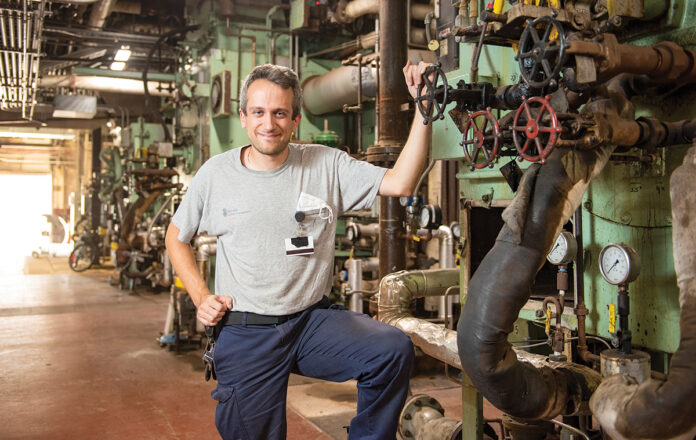
PBN 2021 Innovative Companies Awards
Energy & The Environment: Brown University
Brown University took a big step toward its goal of reaching a net-zero carbon footprint when it recently completed its $26.8 million Thermal Efficiency Project, a massive overhaul of the heating system on the College Hill campus in Providence.
The project upgraded the steam heating system installed in the 1960s to eliminate steam loads from the district heating loop, lower the temperature of the distribution from 350 degrees Farenheit to 200-F, and convert the central heating plant to hot water instead of high-pressure steam. Already, the temperature component has improved: water is now being heated at 250-F.
The Thermal Efficiency Project is part of Brown’s Campus Sustainability Strategic Plan, which aims to cut greenhouse gas emissions to net-zero by 2040, with a 75% reduction by 2025. These goals are part of the university’s mission to curb climate change while also serving as an innovative leader, both in Rhode Island and in academia, for more-sustainable energy practices.
 “[The project] really provided a bridge between our old goals and our new goals,” said David Larson, Brown project manager and senior engineer, who noted infrastructure is now in place to make other improvements toward sustainability.
“[The project] really provided a bridge between our old goals and our new goals,” said David Larson, Brown project manager and senior engineer, who noted infrastructure is now in place to make other improvements toward sustainability.
The project was a transformational undertaking. The overhauled system serves about 4.5 million square feet of the 6.5 million square feet of floor space on campus; it also fulfills a variety of needs, from hot water space heating to fueling high-pressure steam generators used in the process of sterilizing lab equipment.
Groundwork on the project began in 2018 and was completed late last year, although some adjustments are still being made. The total cost invested in the system overhaul amounts to $24.8 million, with a $2 million incentive from National Grid. Those investments are already garnering praise. Earlier this year, the Thermal Efficiency Project was recognized by the Society for College and Universities Planning, earning a 2021 SCUP Award for Excellence in Planning, District or Campus Component.












